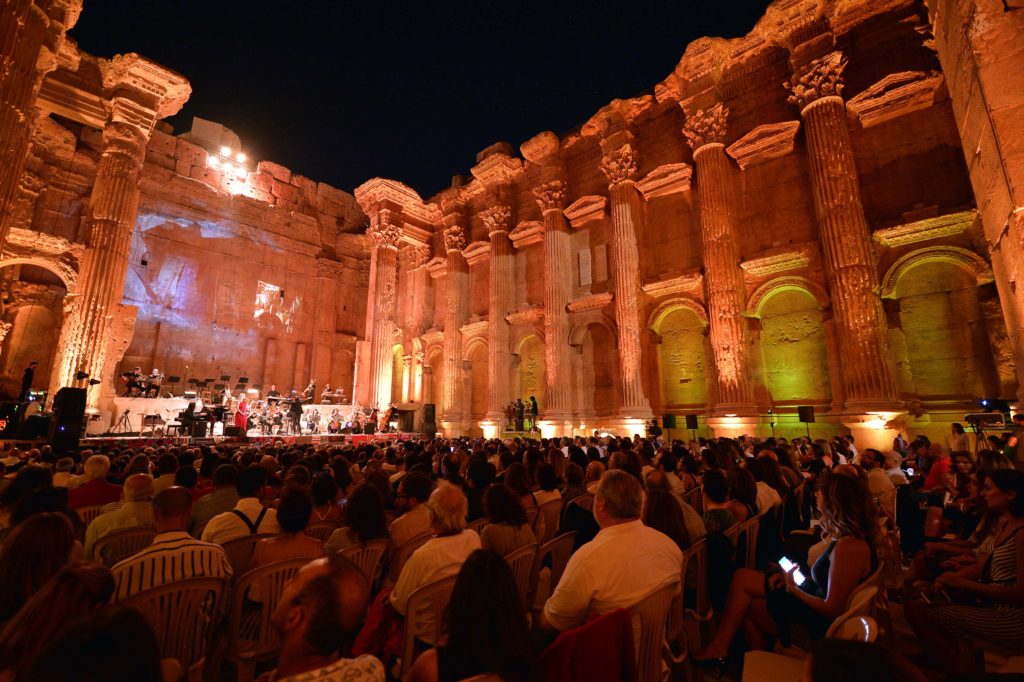Over the decades, Lebanon’s summer festivals have served as symbols of cultural resistance and resilience in the face of conflict and instability, managing to survive, thrive and continue to grow against the odds
The Baalbeck International Festival is a celebration of culture, but it is also a barometer that measures Lebanon’s political stability. Founded in 1956 by former President Camille Chamoun, it is the oldest cultural event in the Middle East and in its heyday was renowned for its glitz and glamour, attracting the cream of the world’s jazz singers and performers to Lebanon. Yet its history includes periods of instability marked by cancellations, relocations and suspensions. Like many festivals in Lebanon, it has persevered in the face of obstacles and inspired other summer cultural festivals, which have reached a pinnacle in recent years. Since 2015, Lebanon’s festival scene has witnessed massive growth; and dozens of new events have sprung up across the country in response to strong support from locals and international visitors.
In many ways, the Baalbeck International Festival’s colourful history exemplifies the challenges faced by the country’s cultural initiatives. In its heyday, the biggest names in the Arab world – including Fairouz, Oum Kalthoum and Sabah – all performed at the festival. In the 1970s, it hosted the world’s jazz greats. Miles Davis, Ella Fitzgerald, Dizzy Gillespie and Nina Simone all made the pilgrimage to Baalbeck to perform against the stunning backdrop of the ruins of the temples of Bacchus and Jupiter, with the pillars Khalil Gibran once described as “giant sentinels in the tranquil night” standing watch over the festivities.
The Lebanese Civil War put a stop to the festival for almost two decades from 1975 onwards, however, and its programme was interrupted again in 2006 when the sudden onset of Israeli bombardments began on the night of a pre-performance by Fairouz, who had to be given a military escort back to Beirut. Amid the early years of the Syrian conflict, fighting on the border led three years of uncertainty, marked by last-minute cancellations and relocations.
—
Wondering where to stay to attend Lebanon’s summer festivals? Check out L’Hôte Libanais’ guesthouses across the country.
—
Since 2014, as Lebanon’s stability has returned and tourists and expats are once again flocking to the country, the festival has gained a new lease of life. Its 60th-anniversary edition in 2016 marked a milestone made all the more impressive for the many challenges that could have so easily have put an end to the festival’s existence. This year’s edition, which takes place from 5 July to 3 August 2019, includes performances by Marcel Khalife, Melody Gardot, and Omar Bashir, among others.
Baalbeck is the oldest of Lebanon’s cultural festivals, but the Beiteddine Art Festival and the Byblos International Festival are also veterans on the scene. Established in 1985 in the midst of the Lebanese Civil War, the Beiteddine Art Festival began as a symbolic act of faith in Lebanon’s cultural and creative scenes during a time of conflict. Over the last 30 odd years, it has established itself as one of the region’s leading cultural festivals, bringing stars including Elton John, Mariah Carey and Joss Stone to play in the beautiful Chouf mountains in the courtyard of a stunning Ottoman palace. Kadim El Sahir, Gabriel Yared and Yasmina Joumblatt, Gerard Depardieu, and Abdel Rahman El Bacha and Billy Eidi are just a few of the artists performing this year.
The Byblos International Festival was founded in the 1960s and ran sporadically every four years or so before becoming an annual event in 2003. Located beside the sea, the stage is back-lit by the city’s spectacular 12th century Crusader castle. In the last 15 years, it has grown swiftly to become one of the biggest in the region, attracting big-name performers and younger crowds. This year’s programme features concerts by Marc Lavoine, Charbel Rouhana and Melhem Zein, Martin Garrix, and Mashrou’ Leila, among others.
While Baalbeck, Byblos and Beiteddine are the most established of Lebanon’s festivals, their success has led to an explosion of smaller summer concert series across the country. From Tripoli to Tyre, Zahle to Beirut, dozens of towns and villages have launched their own summer festivals in the past two or three years. The Jounieh International Festival tends to attract big names, as does the Cedars International Festival in Ehden, which relaunched in 2015 after a break of almost 50 years. Smaller festivals are located in Batroun, Ghalboun, Falougha, Kobayat, Ain Ebel, Ehmej, Amchit, Bkassine and Faqra Kfardebian. These newly established festivals tend to feature just two or three intimate performances each year, with a pleasant community feel and more affordable tickets.
Whether it’s world-renowned performers singing amid ancient ruins or local stars crooning beneath the stars in the clear mountain air, Lebanon’s festival scene increasingly offers something for everyone.
Baalbeck is the oldest of Lebanon’s cultural festivals, but the Beiteddine Art Festival and the Byblos International Festival are also veterans on the scene.

